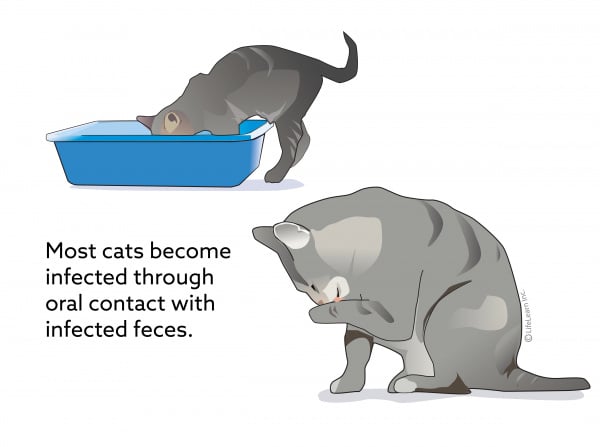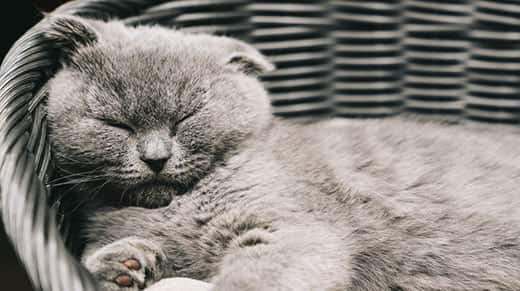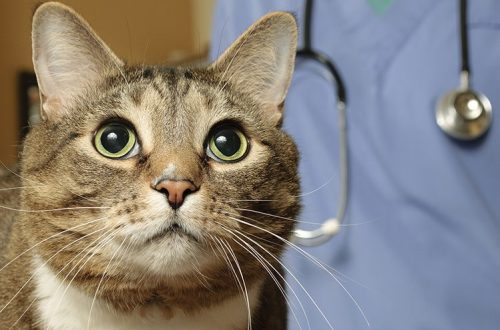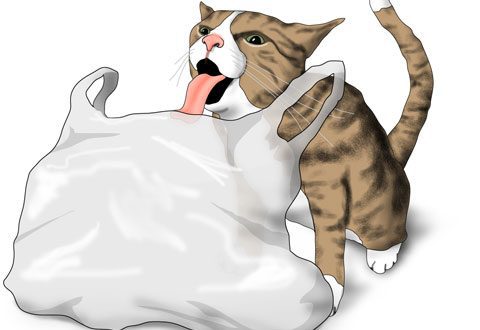
Infectious peritonitis in cats: symptoms, treatment and causes
Feline infectious peritonitis, also known as FIP, is a rare and often fatal disease. Because many cats carry the virus that causes this disease, it’s important that their owners know about it.
Contents
What is Infectious Peritonitis in Cats?
Feline infectious peritonitis is caused by the coronavirus. FIP is caused by a mutation in the coronavirus, which is present in many cats but rarely causes disease in them. But if the cat-borne coronavirus mutates, it can cause FIP. Fortunately, such situations rarely occur, and the frequency of IPC is low.
This is not the coronavirus associated with the COVID-19 pandemic. In fact, coronaviruses have many different strains, and they got their name from the shell that surrounds the virus, which is called the crown.
The common coronavirus lives in the intestines of cats and is shed in their feces. Cats become infected with the virus if they accidentally swallow it. At the same time, if the virus mutates into a form that causes FIP, it moves from the intestine to white blood cells and ceases to be infectious.
Scientists have not yet figured out what causes the virus to mutate into a lethal form, but some believe that this is due to a specific reaction of the cat’s immune system. In addition, this virus is not considered zoonotic, meaning it is not transmissible to humans.
Risk Factors
Cats with a weakened immune system are at a higher risk of developing FIP. The risk group includes animals younger than two years old and with a weakened immune system – cats infected with the herpes virus and other viruses. The disease is much more common in families where several cats live, as well as in shelters and catteries. Purebred cats are also at a higher risk of FTI.

Infectious peritonitis in cats: symptoms
There are two types of IPC: wet and dry. Both varieties are characterized by the following features:
- loss of body weight;
- loss of appetite;
- fatigue;
- recurrent fever that does not go away after taking antibiotics.
The wet form of FIP causes fluid to accumulate in the chest or abdomen, resulting in bloating or difficulty breathing. The dry form can cause vision problems or neurological problems, such as behavioral changes and seizures.
At the first appearance of any signs of FIP, you should make an appointment with your veterinarian as soon as possible so that he can evaluate her condition. Some infectious diseases can have the same symptoms as FIP, so it’s best to isolate your cat from any other pets in the house and keep her outside until consulting a veterinarian.
Infectious peritonitis in cats: treatment
FIP is difficult to diagnose, and most veterinarians make the diagnosis based on a combination of physical examination, history taking, and laboratory tests. There are no standard laboratory tests for feline peritonitis in veterinary clinics. But if the veterinarian takes fluid samples from the cat’s chest or abdomen, they can send them to a special laboratory to be analyzed for the presence of FIP virus particles.
There is no generally accepted treatment or cure for FIP, and most veterinarians consider the disease to be fatal. However, studies published in the Journal of Feline Medicine and Surgery show promising results in the treatment of FIP with nucleoside analogues, which are a novel antiviral drug. Further studies are needed to evaluate the safety and efficacy of this treatment.
Infectious peritonitis in cats: prevention
Since only a strong immune system can protect a cat from FIP, the best way to prevent this disease is to strengthen it:
- • nutrition of a cat with a complete balanced food;
- providing the cat with daily exercise and opportunities for mental stimulation;
- regular visits to the veterinarian for examinations, vaccinations and deworming;
- treatment of any diseases, including obesity and dental problems, in the early stages.
- If several cats live in the house, excessive crowding should be avoided by providing each animal with at least 4 square meters of free space. They also need to provide their own food and water bowls, trays, toys and places to rest.
- Bowls with food and water should be placed away from the tray.
- You should not let the cat go outside alone, but you need to walk with it only on a leash or in a fenced enclosure like a catarium.





